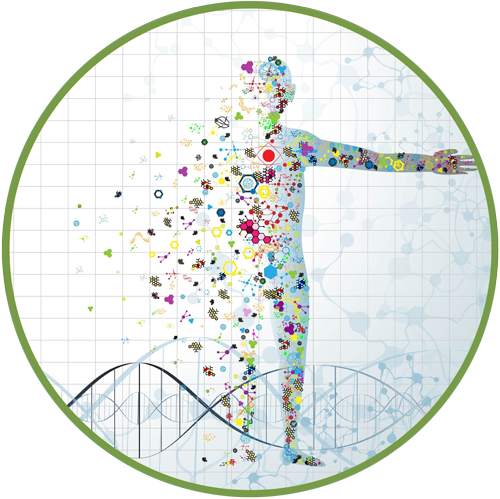Proceedings: DIA Europe 2018

How Can Big Data Lead to Better Outcomes?
Chris M. Slawecki
DIA Senior Digital Copyeditor
s clinical and healthcare data keep growing in variety, volume, and velocity, the use of Big Data and artificial intelligence in clinical research and healthcare product development in the EU will not slow down any time soon. Experience has already shown that more complex sources and types of data require more complex data archiving and access systems, which in turn require more complex data governance and protection structures.
What is Big Data and how can it lead to delivering quicker patient access to medicines and better patient outcomes?
Key Takeaways
- Big data and artificial intelligence, including machine learning and natural language processing, are complementary: More big data provides more analysis and “learning” opportunities for artificial intelligence.
- Real World Data from electronic health records, health insurance claims, and other sources (e.g., wearable devices, mobile health apps, etc.) is a sizeable and growing component of Big Data.
- Regulators have established systematic analyses of big data for drug safety, but efficacy analyses still present challenges such as bias and lack of standards.
- No single sector or organization can make significant progress alone; partnerships and collaborations such as the EU Innovative Medicines Initiative and EU regulators’ Big Data Taskforce will be essential in moving this field forward.
“I think it came very clearly out of the whole session that big data and AI are completely complementary. You cannot do the one without the other,” suggested Isabelle de Zegher, Vice President, Integrated Solutions, PAREXEL Informatics (Belgium). “You can do AI because you have big data. But also, very interestingly, you can actually generate more big data because of AI.”
Why this is important:
- Data-driven program and trial design: More efficient and accurate data analysis will power more efficient protocols and other incremental improvements in development projects.
- Data-driven, automated operations: Process automation will free up resources to accept more projects into pipelines.
- Digital site and patient engagement: Online and other digital solutions will help more patients find more trials for their condition more easily.
- Decentralized and virtual trial models: More remote and/or virtual clinical trials will reduce the burden of travel on patients, making it easier for more patients to participate in more trials.
- Digital biomarkers and endpoints: More precise endpoints collaboratively developed with patients and captured through digital sensors will ultimately result in delivering the care that patients want.
“What was very good for me during the session here is that we start to feel that there is a common understanding of what needs to be done, and as an industry, we’re ready to go,” Isabelle said. “And I think that, for me, is the most important part — that commitment to actually do something different with Big Data.”
What Are the Biggest Parts of Big Data?
Electronic Health Records (EHRs)
- Represent clinician’s interpretation of the patient’s health, and the diagnostic and therapeutic care given to the patient
- Data collected at the point of clinical care
- Diagnoses, medications/prescriptions, procedures
- Observations (including vital signs)
- Problem/symptom lists
- Laboratory and microbiology/pathology results
- Imaging studies (images and radiologist notes)
- Other clinical notes or documents
- Clinician notes, radiology reports, microbiology/pathology report
- Medical test results, disease characteristics/qualities
Real-World Data
- Insurance claims and billing data
- Product and disease registries
- Other patient or disease information shared on digital social platforms
- Patient-generated data captured in home use settings or mobile devices.
Heads of Medicines Agency (HMA)-EMA Joint Big Data Taskforce
In March 2017, the EMA announced the formation of the Heads of Medicines Agency (HMA)-EMA Joint Big Data Taskforce. Its mission is to explore numerous issues regarding the emerging challenges presented by big data by:
- Mapping relevant big data sources and defining the main format in which they are expected to exist
- Identifying the usability or application of Big Data
- Describing the current state, future state, and current and future challenges, regarding
- Regulatory expertise and competences
- Need to specify legislation and guidelines
- Required analysis tools and systems
- Regulators’ versus sponsors’ responsibility for raw data analytics
- Designing a big data roadmap
- Generating a list of recommendations as well as evaluating the usefulness of big data in the regulatory setting
- Collaborating with FDA, Health Canada, and other third party country stakeholders (including ICMRA) to ensure bilateral insights on big data initiatives.
Implications of Implementations
Big Data and associated technologies will continue to create new opportunities at an exponential rate.
- For Industry
- More efficient patient identification for clinical trial recruitment
- More engagement with patients before, during, and after clinical trials
- Better safety oversight through real-time/remote monitoring
- Increased use of patient data
- Potential alternative data sources (e.g., RWE) to expand product labels
- For Regulators
- Establishes multiple avenues for more efficient engagement with a range of stakeholders, including and especially with sponsors and patients
- Presents new ways to capture and consider the patient, healthcare professional, or caregiver perspective during scientific discussions
- Potential alternative data sources for benefit-risk, safety, and efficacy analyses
- For Patients
- More ease in finding and participating in clinical trials for their condition
- More engagement with clinicians before, during, and after clinical trials
- Better safety oversight through real-time/remote monitoring
- More empowered “Patient-Consumers” due to more (and more accurate) healthcare information.
This article summarizes key takeaways from sessions in “Topic D: How Can Better Outcomes Be Enabled by Big Data?”

